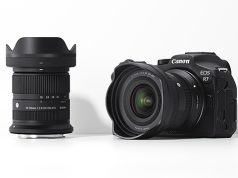Where is your biggest competitor for the digital print business? With so many channels and venues now courting the print market, the first instinct might be to name whichever first comes to mind: mass merchandisers and discounters who take printing as a loss leading enticement for shoppers; the ubiquitous kiosks sprouting wherever consumers with cameras converge; Web-based low-ballers of digital printing; those stores across the street or across town which have vied with you for print sales since this was a photographic business.
If you think that just about covers it all, then you’re overlooking what could be the most formidable alternative to in-store services: consumers’ proven preference to produce some share of printing for themselves. For as much as every sale to another retail channel or solution may cut into your business, so too does every do-it-yourself (DIY) print rolled out at home. Although demand for prints at retail has shown promising growth over the last year, printing at home remains a most popular option for prints from digital. Add online ordering of prints, and home is the launch point for a large percentage of prints made.
PMA’s monthly print trends report through June, the latest figures available, gives home printing a 38 percent share of all digital prints made. All traditional retail sales—in store processing, minilabs, kiosk and orders placed online for in-store pickup—combined for a 47.2 percent share, while another 13.5 percent of prints were orders from home, then delivered there by mail. If you’re a retailer with an online ordering system, you’ve got some stake in the print-at-home market. If not, half of all the print business is currently beyond reach, and unless those habits change dramatically, those retailers may never reclaim as much as a third of the print volume.
Sizing Up the Home Market
Maybe it’s worth sizing up home printing as you would any competitor. After all, they’ve got a convenient printing solution, and that’s also a selling point of retail print services. So what can the retailer do for them that they can’t? How can you turn the DIY mindset of these digital consumers into a sales asset?
It begins with an acknowledgment of where you can compete as well as where you can’t with the consumer’s proclivity to print-at-home. Digital photography has liberated photographers at every level to fire away, take as many pictures as they want. With that, the old 1-to-1 ratio of pictures taken to photos printed has been turned on its head. More pictures are taken now, but only a fraction make it to paper, fewer still to the store.
Print technology has advanced to such a point that just about any inkjet can render a “good enough” print for the consumer who wants only a passing glance at a picture to pass around, or a page of photos to fold up and enclose in a card or letter.
DIY as an Advantage
Once you accept that home printing is here to stay, it’s a reality of the market, the challenge becomes identifying how to turn that to your advantage. It starts with the obvious; feed the habit. Stock and promote the products which make home printing such a convenience. Inks and toner, cartridge refill kits, specialty print media and photo paper, and of course, some hardware.
On the hardware side, the pitch for a share of home printing market has primarily focused on the compact photo specialty printers. As an alternative to in-store services, they give consumers an easy answer for rendering photo quality 4×6, 5×7 and 8×10 prints at home. They’ve certainly struck a chord with many consumers.
According to PMA, 18 percent of digital camera owners, or 12 percent of all households, purchased photo quality printers last year. The dedicated, small format printers (up to 5×7 prints) accounted for 29 percent of printer sales. Bundling such printers with a digital camera was especially effective: 71 percent of small format printers sold were packaged with a digital camera.
As specialized print solutions, though, their appeal is limited, especially when consumers realize comparable capabilities and results are available in other home printers. In fact, pushing these compact printers as an in-home solution for digital imaging may be a short-sighted strategy. For what the DIY digital imaging aficionado really needs, and what could seed new business for retailers long-term, is one of the current multi-function printers (MFPs).
Imaging software has long been described as the “digital darkroom,” but that label may be just as appropriate for these self-contained imaging service centers. Today’s typical MFP, even starting under $100, is a photo quality color printer/copier with built-in card reader. Most now feature a built- in LCD and rudimentary image editing software which lets users play with and preview their pictures before printing— also a selling point of the photo printers.
But that’s not all: the typical MFP is also a flatbed color scanner. So the MFP, usually positioned as a home/small office solution, is also an all-in-one imaging studio. Once there, the user can start doing all those wonderful things they’ve learned to love about digital imaging and combine recent images and old photos into some showcase keepsakes.
Creativity Moves Consumers to Retail
These are not new options, scanners have been available for years. What is noteworthy though is the combination of price, features, performance and quality which makes current MFP systems such an attractive solution for the print-at-home crowd. They can easily be bundled with a camera, or suggested as a more versatile alternative to the dedicated photo printer. Get more MFP’s in place and you’re seeding the market for all the products beyond the standard print, where the real profits are for retailers – specialized digital services.
With the right equipment, and fully aware of their creative options, the print-at-home customer could represent much more than a drain on business. At retail, standard prints have already mutated into a commodity business where increased demand brings diminishing profits. So, retailers must look beyond the standard print as the path to surer profits.
Those opportunities begin with the limitations of home printing, starting with the most obvious: batch printing of larger quantities of prints or multiple copies of the same images and enlargements beyond 8×10. Then, there are the many forms of creative output digital imaging makes it so easy to achieve, but hard to produce at home. Oversized scrapbook pages, photo books, custom albums and calendars are all increasingly popular, and profitable.
Today’s DIY home printing customer is a good candidate for an MFP as an all-in-one image capture/output solution for anything up to 8×10. Even retailers who avoid the highly competitive printer market can benefit from the ease with which consumers can incorporate old photographs into creative projects, via the scanner built into their MFP which also doubles as a proof, photo and computer printer. Present them with the possibilities in print: a family photo history and memento of the recent reunion, in book form; a photo timeline of a child’s school years; a life’s worth of photo memories for a couple celebrating a special anniversary; a DVD archive of pictures past and present. All prepared at home but profitably produced in store.
The DIY mindset is here to stay, but it can be an asset with consumers who are taught to think beyond the standard print, and shown solutions which make it easy to create those products. yy





